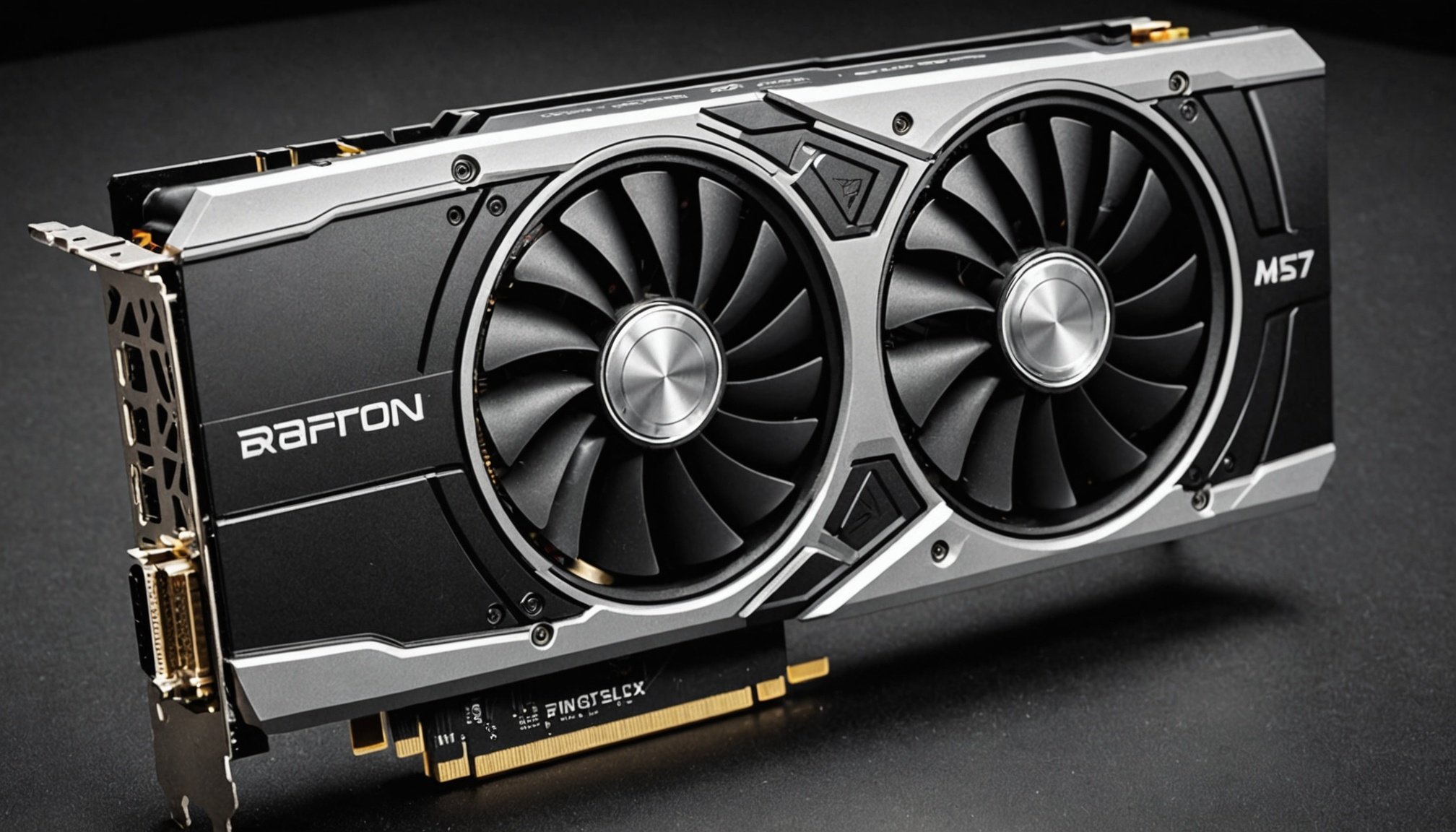Overview of Graphics Card Brands
In the landscape of the graphics card market, three titans reign supreme: NVIDIA, AMD, and Intel. Each brand has carved its niche over decades, evolving from humble beginnings to industry leaders. NVIDIA, established in 1993, has consistently delivered high-performance graphics solutions, renowned for their cutting-edge Ray Tracing technology. AMD, with a history spanning back to 1969, offers robust competition through its Radeon series, known for their value-driven performance. Intel, a longtime player in the CPU arena, has recently ventured into the GPU domain, promising to bring its innovation prowess to graphics cards.
Understanding the brand reputation is instrumental for consumers. NVIDIA is often lauded for its premium products and reliability, but tends to command a higher price. AMD is favoured for cost-efficiency, especially in mid-range options, maintaining its appeal among budget-conscious users. Intel, though newer, benefits from its established reputation in computing hardware.
In the same genre : How do high refresh rate monitors elevate your competitive gaming experience?
The decision of which graphics card brand to choose can significantly impact user experience, making brand reliability and user reviews crucial considerations in purchasing decisions. By recognizing each brand’s strengths and legacy, consumers can make informed choices that align with their individual needs and preferences.
Performance Metrics of Graphics Cards
When evaluating graphics card performance, several key metrics come into play. Frames Per Second (FPS) is critical for gamers, representing the smoothness of motion and gameplay. Higher FPS typically results in more fluid graphics, essential for immersive gaming experiences.
Also read : Exploring the impact of motherboard chipset on system performance and compatibility: a comprehensive guide
Another important metric is Video Random Access Memory (VRAM), which influences a card’s ability to handle large textures and high-resolution displays. More VRAM typically allows for better performance with modern games and demanding applications.
Clock speeds also impact performance, indicating how fast the GPU can process data. Higher clock speeds can lead to quicker rendering times and more efficient processing, especially in resource-intensive tasks.
Comparing NVIDIA and AMD through benchmarking reveals distinct performance dynamics. For example, while NVIDIA traditionally excels in Ray Tracing and advanced gaming features, AMD’s cards often shine in terms of cost-efficiency and VRAM offerings. Such differences can significantly affect user experience depending on specific needs, such as gaming versus professional graphics work.
Performance variations between cards become evident when considering specific use cases. While gaming cards prioritize FPS for smooth gameplay, professional users may focus on VRAM and compute power for 3D-rendering or complex simulations. Understanding these metrics helps in identifying the most suitable option for different user requirements.
Warranty and Support Options
Navigating the landscape of graphics card warranties and support can be an enlightening experience for any prospective buyer. Warranty duration and terms often vary significantly among graphics card brands, directly impacting long-term ownership satisfaction. NVIDIA, AMD, and Intel offer different frameworks for warranty comparison, each with distinct levels of protection and service options.
Typically, graphics cards come with manufacturer warranties ranging from one to three years, with some brands offering extensions through registration or additional purchase. NVIDIA, known for its premium pricing, often includes robust warranty terms, contributing to its image of graphics card reliability. Conversely, AMD focuses on delivering value, often balancing warranty coverage with cost-efficiency. Intel, as a newer competitor, is still establishing its footing regarding support offerings.
Customer support experiences vary widely, with users noting responsiveness and problem resolution as key factors. Online communities and forums often provide additional insights beyond official customer support, offering practical advice from fellow users. This communal feedback can offer valuable reflections on reliability and brand trustworthiness, influencing purchasing decisions. Ultimately, comprehensive warranty coverage and responsive support can significantly enhance the consumer’s confidence in their chosen graphics card brand.
User Reviews and Feedback
Understanding the influence of user reviews is crucial in shaping brand reputation in the graphics card industry. For NVIDIA, user feedback often highlights its dedication to premium quality and advanced technology. Enthusiasts frequently commend NVIDIA for features such as Ray Tracing and DLSS, which enhance gaming realism.
By contrast, AMD generally receives praise for providing substantial performance at a more accessible price point. Users often highlight the excellent value offered by AMD cards, especially in the Radeon series. However, some feedback suggests occasional driver issues, impacting performance stability.
Common themes in consumer feedback include performance consistency and after-sales service quality. Users appreciate responsive customer support and reliable warranty service, both of which significantly influence purchasing decisions.
The collective voice of user reviews does much to shape public perception of brand reliability. Consistent positive experiences build trust and confidence in a brand, whereas negative feedback may deter potential buyers. Consequently, user reviews play a pivotal role in guiding consumers toward their preferred graphics card brand. This comprehensive analysis aids buyers in making informed decisions that align closely with individual expectations and technological demands.
Expert Recommendations and Guides
Choosing the ideal graphics card involves careful consideration of various factors. One primary aspect is the intended usage. For gamers, prioritizing high FPS and advanced graphics features is essential, as these define the smoothness and realism of gameplay. Meanwhile, professionals should focus on cards with substantial VRAM and computing capabilities for tasks like 3D rendering and simulations.
Another vital consideration is budget. AMD often presents a more budget-conscious choice, offering commendable performance at a lower price point, which appeals to mainstream users. On the other hand, NVIDIA is often preferred for premium performance, catering to enthusiasts seeking cutting-edge technology.
Compatibility is also crucial. Ensuring that the selected card is compatible with existing system components, such as the motherboard and power supply, prevents potential setup issues.
Experts often recommend specific graphics card models for different gaming genres. For instance, action-packed games may benefit from NVIDIA’s superior Ray Tracing, while strategy games might flourish on AMD due to their affordability and sufficient performance.
Beginners should consider user-friendly options with broader support, while experienced users might explore high-end cards featuring advanced settings and customization. Tailoring choices based on these insights streamlines the selection process, ensuring an optimal fit for individual needs.
Visual Comparison of Graphics Cards
Presenting graphics card data visually allows for quick comprehension and insightful analysis. By leveraging comparison charts, users can efficiently evaluate graphics cards’ offerings and performance metrics.
Performance Benchmarks Graph
Performance benchmarks graphically illustrate differences in graphics card performance. Metrics such as Frames Per Second (FPS), Video Random Access Memory (VRAM), and clock speeds present a clear picture. NVIDIA’s strength in Ray Tracing can be assessed directly against AMD’s VRAM advantage, notably impacting gaming and professional use cases.
Warranty Comparison Table
A comprehensive warranty comparison table helps highlight differences in warranty coverage among brands like NVIDIA, AMD, and Intel. Duration, terms, and conditions are plainly laid out, offering consumers insights into potential long-term graphics card reliability and peace of mind.
User Satisfaction Ratings
Visual aids in user satisfaction provide a snapshot of customer experiences and brand sentiment. By comparing user reviews and ratings, customers can glean insights into brand reputation, ‘s technological advances, and AMD’s cost efficiency. User feedback plays a substantial role in shaping overall brand perception and influencing purchasing decisions.











